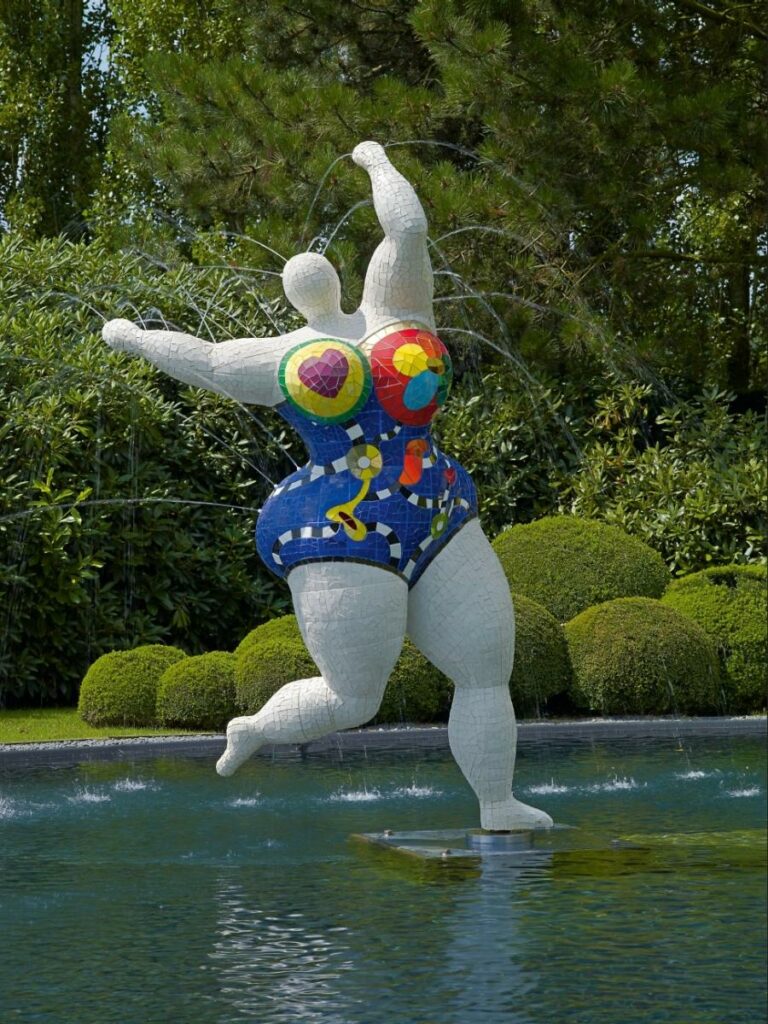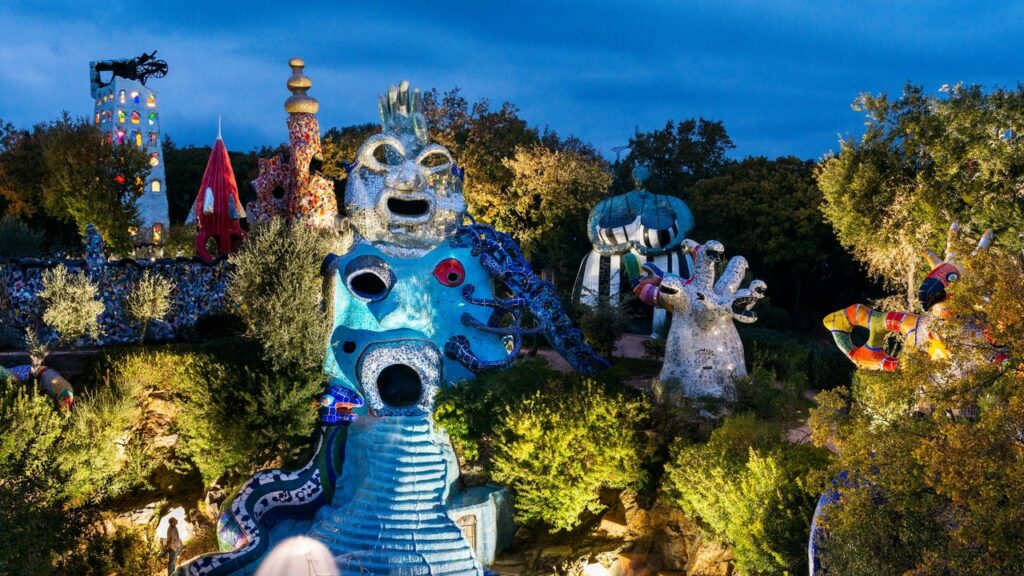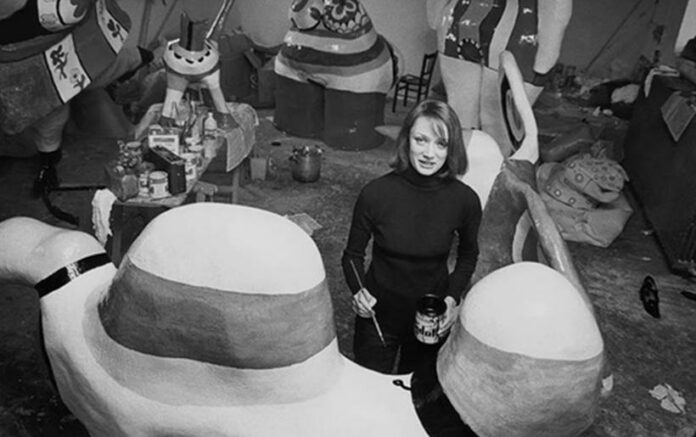By Panagiota Katsaveli,
Art is a beautiful, creative way of self-expression and a form of showcasing one’s different perspective of reality around us. Many people around the world use art in order to unveil their emotions and bring change in the global perception about different topics. Niki de Saint Phalle is one of the artists that have stayed in people’s minds for her distinctive work which heavily brought about serious issues of her time regarding gender etc. However, how many of the readers of this piece can say that they are familiar with her and her art? My guess would be scarcely any…
Niki de Saint Phalle was a French American sculptor, painter, filmmaker, and author who was born with the name Catherine Marie-Agnes Fal de Saint Phalle on October 29, 1930, in France. She was one of the most notable female sculptors until today and she also stands out due to her social work. Her parents were of French and American origin, and she was part of a rich family with five children, a family that ended up losing their wealth in a stock market collapse. New York City was her home for most of her childhood and teenage years, while she maintained meaningful bonds with her family back in the European continent. One of her initial attempts to showcase her artistic inclinations was her painting the fig leaves of her convent school’s classical sculptures red, as a teen. Even though she is known as a talented artist nowadays, her first career was modeling, with her pictures appearing in issues of magazines like Vogue and Life. She acquired two children with her first husband and during that period, she abandoned modeling in order to explore the magical land of art. Her serious concern with art started after her first marriage failed in 1961 when she began working alongside the Swiss artist Jean Tinguely, who eventually became her loving husband. Niki de Saint Phalle died on May 21, 2002, at the age of 71 in La Jolla, California. Until the day she left her last breath, her fame had reached international status and she had been acknowledged as one of the most prominent artists of her time both by contemporary and later critics.

Even though Saint Phalle’s works of art are impressive colorful masterpieces, for the most part, the story and emotions hidden in the shadows behind them are much darker. Her childhood took place in an abusive environment full of violence, leading her to move to the USA as an act of desperation to be saved. At the age of 22, she suffered a mental breakdown which caused suicidal thoughts to appear, and she spent several weeks in a French asylum to heal. In this place, without any form of training, she discovered and explored the healing superpower of art; it helped her process her demons. “I started painting in the madhouse”, Saint Phalle once observed, “where I learned how to translate emotions, fear, violence, hope, and joy into painting. It was through creation that I discovered the somber depths of depression, and how to overcome it.”. She believed art healed her.
Art became the means for her to unfold and explain the most hidden less-apparent parts of her soul, while simultaneously letting them out in order to set herself free of them. Moreover, she defied artistic conventions, creating works that were overtly feminist, performative, collaborative, and monumental. Important terms that characterize her works are innovation, engagement with social issues just to name a few. From the beginning of her art journey, she was in favor of ignoring artistic norms and promoted artworks instead that combined assemblage and performative modes of creation, like shooting at her canvases. She did not limit herself to the exploration of certain mediums, but her interests included architectural projects, sculpture gardens, books, prints, films, theater sets, clothing, jewelry, and, famously, her own perfume.
This important French artist is known mainly for her sculptures of female figures, named with the term Nanas. Colorful, patterned, and crafted in a variety of shapes and sizes, these sculpted women embody the feminist spirit which is a prominent characteristic of her work as a whole. Her early sculptural female figures of brides and women gave way within a few years to the series of Nanas, which is still one of her most successful works. The creations first appeared in 1964 and were inspired by Phalle’s friend Clarice Rivers. Several black and white Nanas were created in support of the Black Rights movement, proof of the artist’s belief that all women are goddesses, regardless of color.

As many art lovers and enthusiasts might know, Niki de Saint Phalle’s lifework is located in Tuscany, and it is a bucket-list-worthy item for sure! The work for which she devoted 20 years of her life is called Tarot Garden, a 14-acre sculpture park studded with monumental figures, some of them 40 feet high, made of sprayed concrete paved with mosaics of colorful china, glass and mirror shards, all inspired by tarot cards. This work is considered her big victory over darkness and the negative emotions that deluge human existence. This special place fulfilled her desire to provide the public with a healing place and to transform pain into a joyful experience. The irony of this case is the allegations that creating this masterpiece led to her death; specifically, she was 71 when she died in 2002 of respiratory failure (her lungs possibly damaged by toxic fumes from materials she used).
Art can function as a safe space to express ourselves and discover the world. Since not everyone is capable or simply interested in producing, admiring and analyzing artworks is the best way to broaden our horizons and witness perspectives distinct from ours that challenge us. Niki de Saint Phalle is certainly an artist with the power not only to inspire us but also to help us investigate important issues from different points of view. She is and will continue to be a prominent female sculptor whose works will live thought out the centuries. This article cannot possibly help you dive into her work to a full extend, so it is up to you to do it and research all her amazing pieces!
References




